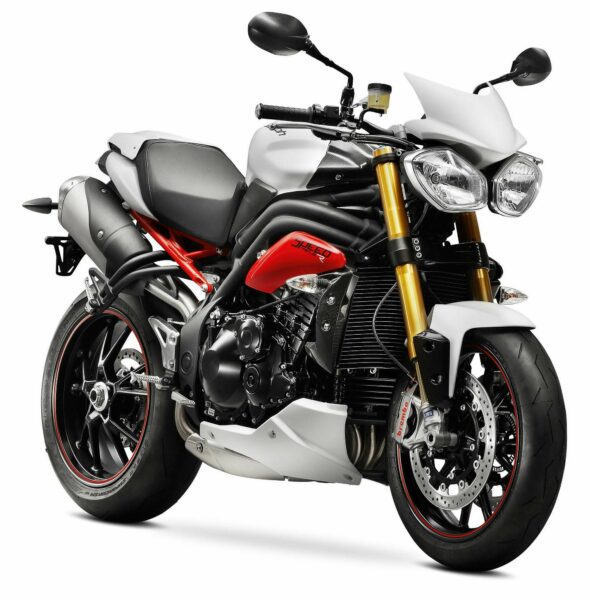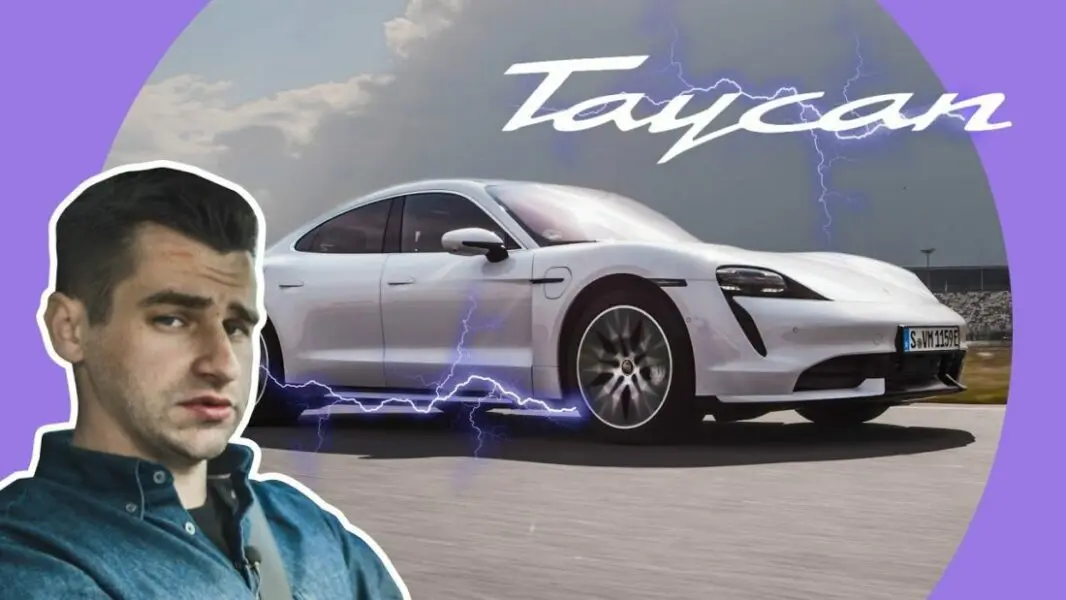
We drove: Porsche Taycan Turbo is a promising revolution
Before you ask me to admit it - I'm certainly one of those electroskeptics who isn't sure about the meaning of serious electric sports cars (even supersports, if you will). Regardless of the anthems to the electric drive (which, I admit, of course, are not twisted), which I read and hear. In a sports car, light weight is a mantra that Porsche repeats so carefully and constantly that it was almost unusual when they decided to create the first BEV, which they immediately declared would have all the trappings of a real Porsche. "Brave" - I thought then ...
Well, that they chose a four-door model, i.e. a member of their growing GT segment, is actually logical. The Taycan, at 4,963 meters, is not only shorter than the Panamera (5,05 meters), but more or less a big car - it's also a classic four-door car. What is interesting about all this is that he hides his centimeters very well, and his five-meter length comes to the fore only when a person really approaches him.
The designers did their job so well when they brought the Taycan closer to the iconic 911 rather than the larger Panamera. Cleverly. And of course, it's clear that they also needed enough space to supply enough power (read: to install a large enough battery). Of course, it is also true that the driving dynamics assessment does not take into account the same watts for the 911 GT supersport model or the Taycan grant tour. So it's obvious that the Taycan are in the right company ...

You may find it odd that Porsche only allowed us to test the new model lineup now, in the early fall, when the car was unveiled about a year ago. Remember, in the meantime (and Porsche too) there was an epidemic and the first rides were shifted and shifted ... Now, just before the Taycan gets the first update (some new colors, remote purchase, head-up screen ... facelift might be the wrong word for now no), but this was the first time I was able to get behind the wheel of a car, which they said was a revolution.
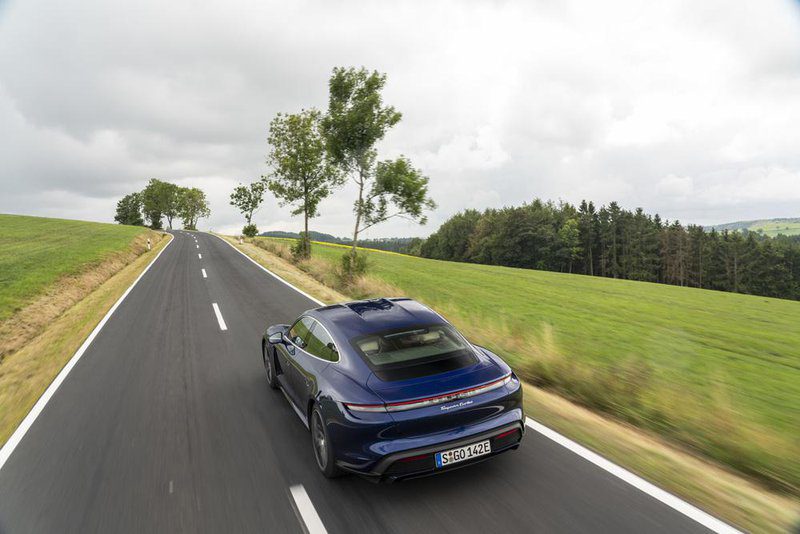
First, maybe a few numbers, just to refresh your memory. There are currently three models available - Taycan 4S, Taycan Turbo and Turbo S. A lot of ink has been spilled around the name and a lot of bold words have been said (Elon Musk stumbled too, for example), but the fact is that Porsche, the Turbo label has always been reserved for " of the top line”, that is, for the most powerful engines (and the most prestigious equipment), above this, of course, only the S addition. In this case, this is not a turbo blower, this is understandable (otherwise, the 911 models also have turbocharged engines, but there is no label turbo). These are, of course, the two most powerful powerplants in the Taycan.
The heart of the propulsion system, around which everything else is mounted, is, of course, the huge battery with a total capacity of 93,4 kWh, which, of course, is installed at the bottom, between the front and rear axle. Then, of course, there are the muscles – in this case, two liquid-cooled electronic motors, each driving a different axle, and in the Turbo and Turbo S models, Porsche has developed a special two-stage automatic motor. the transmission for them is designed primarily for more acceleration, because otherwise they both start in second gear (which would otherwise mean an 8:1 gear ratio, and even 15:1 in first). Which, of course, allows you to develop a maximum speed that is not quite typical for electric vehicles (260 km / h).
For the most drastic accelerations and driving performance, the Sport or even Sport Plus driving program must be selected, while Normal (supposedly needs no translation) and Range are for more moderate requirements, and the latter even for extended range. Well, in this area the Taycan has something to show - this athlete can cover up to 450 kilometers, and this is in the Turbo model (slightly less, the weakest 4S with the same battery and even 463 km - of course in the Range). And the 800V system also allows for extremely fast charging – up to 225kW can take the battery, which in ideal conditions means just 22,5 minutes for an 80% charge (11kW built-in charger, 22 arriving at the end of the year).
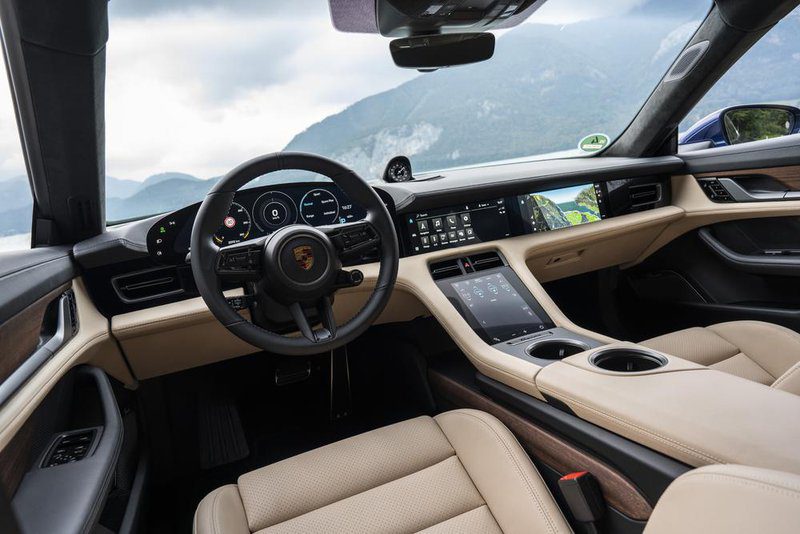
But I am sure that the vast majority of future owners of this model will be primarily interested in what it can do on the road, how it can stand next to its much more famous and well-established relatives with a classic drive for decades. Well, at least the numbers here are really impressive - power is relative, but still: 460 kilowatts or 625 hp. can work under normal conditions. With the Overboost function, even 2,5 or 560 kW (500 or 761 hp) in 680 seconds. How impressive, almost shocking, is the 1050 Nm of torque for the S version! And then the acceleration, the most classic and vaunted value - the Turbo S should catapult to 2,8 in XNUMX seconds! To make your eyes water...
With a flood of superlatives and breathtaking numbers, this classic chassis mechanic, that core and essence of every athlete, is being quickly discarded. Oh no. Fortunately, not quite so. Porsche engineers had the daunting task of making a sporty GT in the manner of the best Porsches, despite the fact that it is an electric drive that brings with it the worst nightmare of any engineer - mass. Exceptional weight due to powerful batteries. No matter how perfectly distributed it is, no matter what the low center of gravity means - this is the weight that needs to be accelerated, braked, cornered ... Of course, I admit that 2.305 kilograms of “dry” weight is not I don’t know how much (for such large car with four wheels) drive), but in absolute terms this is a serious figure.
Therefore, Porsche added everything to the arsenal and modernized it - with individual wheel suspension (double triangular guides), an active chassis with air suspension, controlled damping, active stabilizers, a rear differential lock and an actively controlled rear axle. Perhaps I will add active aerodynamics and mechanical torque vectoring to this so that the completeness of the measurement is complete.
I saw the Taycan for the first time there, at the Porsche Experience Center on the legendary Hockenheimring, really up close. And until I got to the door, the electric Porche was actually running a lot less than it really is. In this regard, designers need to take off their hats - but not only because of this. The proportions are more refined, refined than in the larger Panamera, and at the same time, I didn't feel like it was a puffed up and enlarged 911 model. And everything works uniformly, recognizably enough and at the same time dynamic.
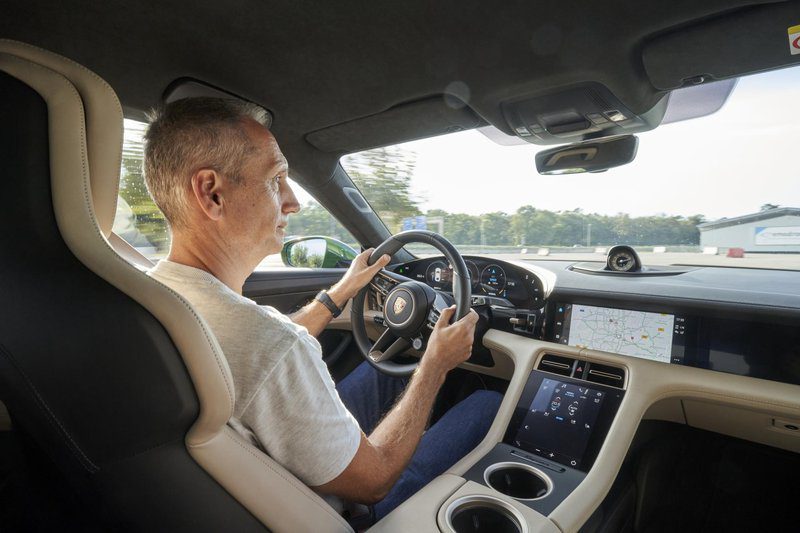
I definitely won't be able to test them all in sparsely dosed (or so it seemed to me) miles and hours, so the Turbo seemed like a reasonable choice to me. The current driver is a GT, more spacious than the 911, but as I expected, the cabin still immediately hugs the driver. The environment was familiar to me, but on the other hand, it was completely new again. Of course - everything around the driver is digitized, the classic mechanical or at least fast switches are no more, the typical three sensors in front of the driver are still there but digitized.
Three or even four screens surround the driver (digital instrument cluster, infotainment screen and ventilation or air conditioning underneath) - well, a fourth is even installed in front of the co-pilot (option)! And starting is still to the left of the steering wheel, which thankfully Porsche no doubt has with a rotary switch for selecting driving programs. To the right, above my knee, I find a mechanical toggle switch, say a shift lever (wired), with which I shift to D. And the Taycan moves in all its menacing silence.
From this point on, it all depends on the driver and his determination, and, of course, on the available power source in the battery I'm sitting on. That the first part will be on the track to test handling, I'm actually looking forward to it, because if I'm somehow ready to accelerate (so it seemed to me), somehow I could not imagine the agility and handling. at the level of Porsche with all this mass. After a few laps on a very diverse polygon, with every possible set of long, fast, narrow, open and closed turns, with a turn and simulation of the famous Carousel in Green Hell, it got me thinking.
As soon as the Taikan left some of its gray zone, as soon as the mass began to move and all systems came to life, immediately after that, the five-meter and almost two and a half-ton machine turned from a bulky porter into a determined athlete. Maybe heavier than the nimble mid-range, but... I found it very strange how obediently the front axle turns, and even more how the rear axle follows, not only that - how decidedly the rear axle helps, but the front wheels do not (at least not too fast)) overloaded. And then - how complex are the electrically operated stabilizers that control the weight of the body so stoically, so stoically that it seems that physics has stopped somewhere.

The steering is precise, predictable, perhaps even a little too strongly backed by the sports program, but certainly more communicative than I'd give it credit for. And personally, I would have liked maybe a little more straightness on the outskirts of the boot – but hey, since this is a GT after all. With just the brakes on the test track, at least for those few laps, I couldn't get close enough. Porsche's 415mm (!!) tungsten-coated rims bite into the ten-piston caliper, but Porsche claims regeneration is so efficient that under normal (read: road) conditions, up to 90 percent of braking comes from regeneration.
Well, it's tough on the track ... And this transition between electronic engine braking and mechanical brakes is difficult to detect, difficult to change. At first it seemed to me that the car was not going to stop, but when the force on the pedal crossed some visible point, it pushed me into the lane. Well, when I tested the Taycan on the road in the afternoon, I rarely got to that ...
And just as I began to gain confidence in the Taycan's demeanor, when I quickly felt all the weight resting on the outside wheels, despite the chassis filtering this sensation well and not blurring the line between grip and slip, the tires showed that all that weight (and speed) is really here. The rear began to give in when accelerating, and the front axle was suddenly unable to cope with sudden changes in direction during a series of turns.
Oh, and that sound, I almost forgot to mention it - no, there is no silence, except when driving slowly, and when accelerating hard, I was accompanied by a clearly artificial sound that did not imitate anything mechanical, but was some distant mixture of Star Wars , Star trekking and gaming space adventures. With each acceleration, as the force pressed against the back of the large shell seat, my mouth widened into a smile - and not just because of the cosmic musical accompaniment.
Between a big smile and surprise, I could describe the feeling during the Launch control test, which does not require special knowledge and preparation, as in the competition (though ...). The plant promises three seconds to 60 miles, 3,2 to 100 km / h ... on the verge of likelihood. But when I slightly released the brake in bewilderment, it seemed to me that someone behind me pressed the switch to start the rocket plane!

Wow - how amazing and with what unstoppable force this electric beast accelerates, and then you can also feel the mechanical shock with a single gear shift (about 75 to 80 km / h), and this is the only thing that is a little confusing for a completely linear force. while the body pressed deeper and deeper into the seat, and my stomach hung somewhere on my spine ... so, at least, it seemed to me. As the fence along the hut grew and grew, so did the speed. One more check of the brakes ... and the end.
The playfulness and quiet driving on (motorways) during the day only proved that the Taycan is sovereign in its comfort and quiet driving section, and that it covers several hundred kilometers without any problems. But I never doubted this before. The Taycan is truly a revolution for the brand, but from first impressions, it seems like this mental leap in powertrain design for Porsche was just another new (top-of-the-line) sports car in the lineup.
